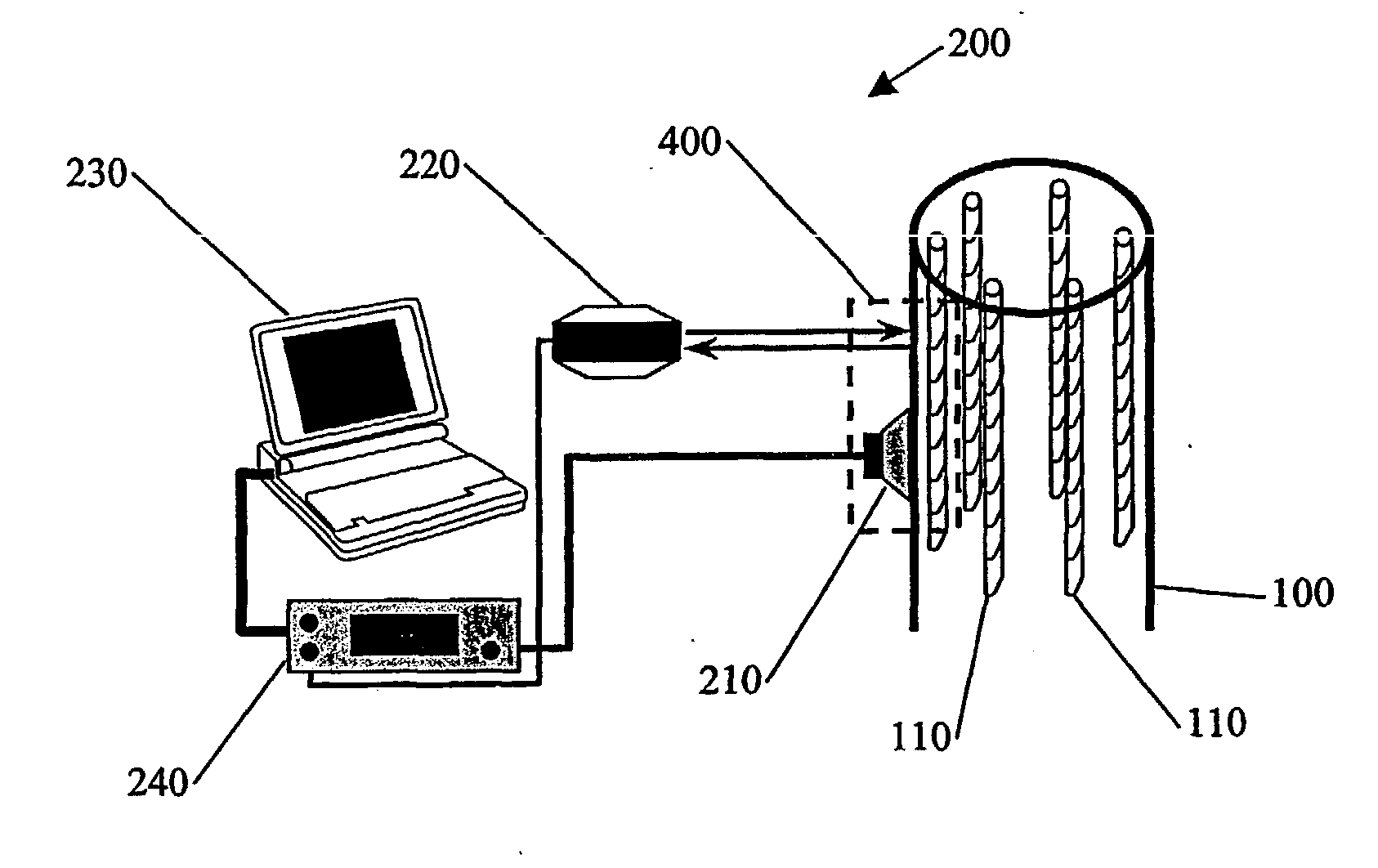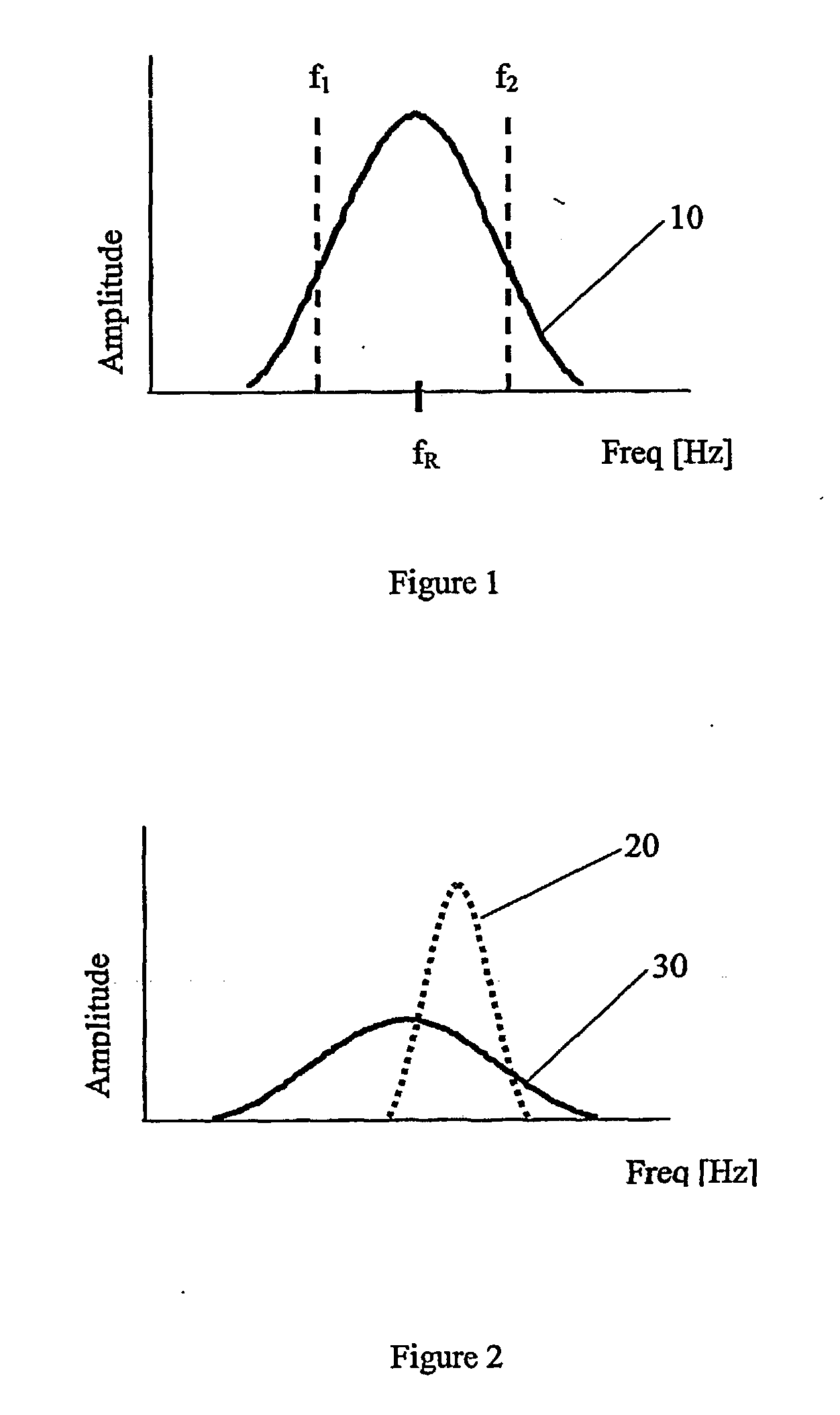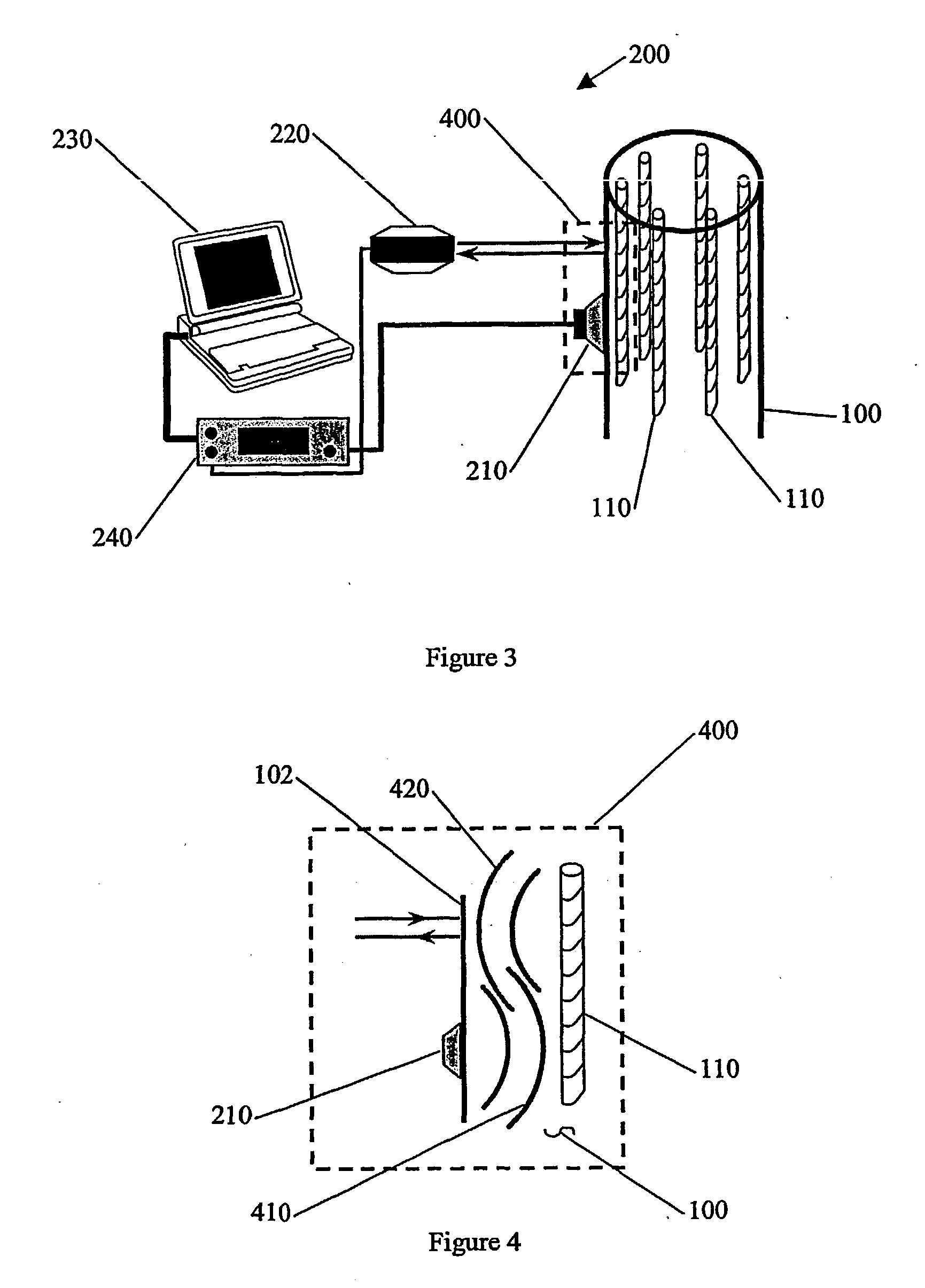Nondestructive detection of reinforcing member degradation
a technology of reinforcing members and degradation, which is applied in the direction of fluid tightness measurement, instruments, mechanical means, etc., can solve the problems of weak tension, weak compression of concrete, and inability to withstand stress easily,
- Summary
- Abstract
- Description
- Claims
- Application Information
AI Technical Summary
Benefits of technology
Problems solved by technology
Method used
Image
Examples
Embodiment Construction
)
[0040] The purpose of the present invention is to develop a portable, non-imaging, non-destructive evaluation technique and device capable of detecting a degraded reinforcing member. The preferred embodiment of the present invention takes advantage of the acoustic resonance properties of re-bar in concrete in order to determine if significant re-bar degradation is present. The physical dimensions and elastic properties determine the resonant frequencies of the re-bar. The damping constant, Q, depends on the bonding of the re-bar to the concrete. Undegraded re-bar is expected to be well bonded to the concrete. However, as the re-bar degrades and expands, it effectively disbonds from the surrounding concrete, resulting in an increase of the damping constant Q. Thus, by devising a means to measure the damping constant Q of the re-bar, the bonding characteristics (and thereby the presence of degradation) can be determined. The two important components for a portable system are the effi...
PUM
| Property | Measurement | Unit |
|---|---|---|
| diameter | aaaaa | aaaaa |
| frequency content | aaaaa | aaaaa |
| resonant frequencies | aaaaa | aaaaa |
Abstract
Description
Claims
Application Information
 Login to View More
Login to View More - R&D
- Intellectual Property
- Life Sciences
- Materials
- Tech Scout
- Unparalleled Data Quality
- Higher Quality Content
- 60% Fewer Hallucinations
Browse by: Latest US Patents, China's latest patents, Technical Efficacy Thesaurus, Application Domain, Technology Topic, Popular Technical Reports.
© 2025 PatSnap. All rights reserved.Legal|Privacy policy|Modern Slavery Act Transparency Statement|Sitemap|About US| Contact US: help@patsnap.com



